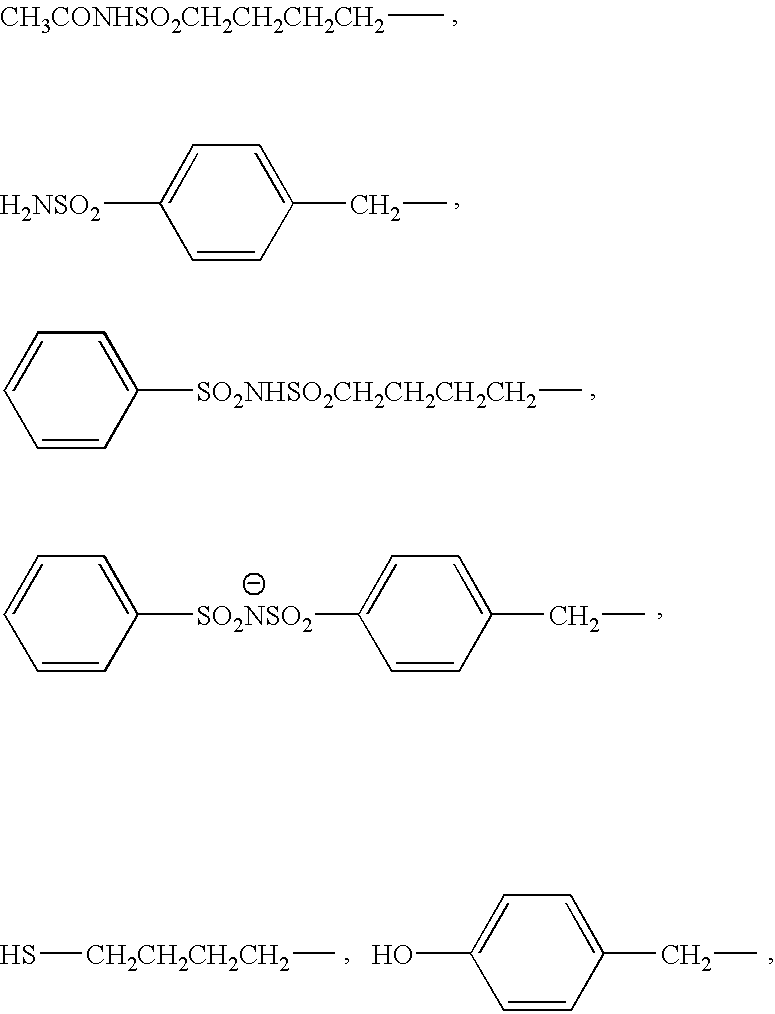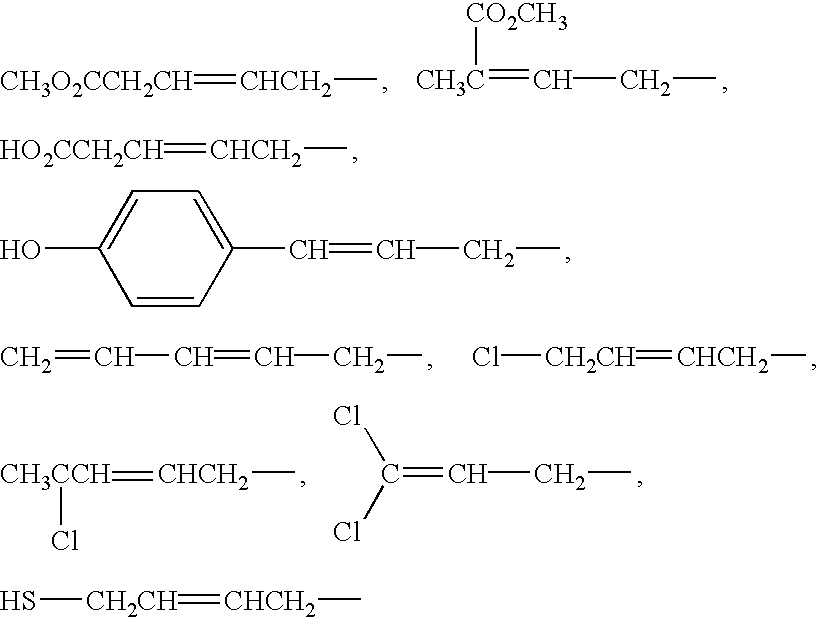Photosensitive composition and negative working lithographic printing plate
a technology of working lithographic printing plate and composition, which is applied in the direction of thermography, instruments, and photosensitive materials, can solve the problems of unsatisfactory results and difficult film strength of photosensitive layer to consist with preservation stability, and achieve excellent film strength of photosensitive layer and preservation stability in photo-crosslinking composition
- Summary
- Abstract
- Description
- Claims
- Application Information
AI Technical Summary
Benefits of technology
Problems solved by technology
Method used
Image
Examples
synthesis example 1
Synthesis of Polymer P-1
A mixture of 0.8 mol of Monomer A-1, 0.2 mol of methacrylic acid, 0,03 mol of azo thermal polymerization initiator (V-65, produced by Wako Pure Chemical Industries, Ltd.) and one liter of N,N-dimethylacetamide was stirred at 70° C. for 5 hours in a flask. After the completion of the reaction, the reaction mixture was added to 5 liters of water little by little with stirring to deposit white powder. The powder was collected by filtration and dried to obtain Polymer P-1 in a yield of 90%. The structure of the polymer was confirmed by NMR, IR and GPC.
synthesis example 2
Synthesis of Polymer P-8
A mixture of 0.6 mol of Monomer A-81, 0.4 mol of acrylic acid, 0.02 mol of azo thermal polymerization initiator (V-65, produced by Wako Pure Chemical Industries, Ltd.) and one liter of N,N-dimethylacetamide was stirred at 70° C. for 5 hours in a flask. After the completion of the reaction, the reaction mixture was added to 5 liters of water little by little with stirring to deposit white powder. The powder was collected by filtration and dried to obtain Polymer P-9 in a yield of 85%. The structure of the polymer was confirmed by NMR, IR and GPC.
synthesis example 3
Synthesis of Polymer P-16
A mixture of 0.5 mol of Monomer A-17, 0.3 mol of methacrylic acid, 0.2 mol of benzyl acrylate, 0.03 mol of azo thermal polymerization initiator (V-65, produced by Wako Pure Chemical Industries, Ltd.) and one liter of N,N-dimethylacetamide was stirred at 70° C. for 5 hours in a flask. After the completion of the reaction, the reaction mixture was added to 5 liters of water little by little with stirring to deposit white powder. The powder was collected by filtration and dried to obtain Polymer P-16 in a yield of 90%. The structure of the polymer was confirmed by NMR, IR and GPC.
Similarly, the polymers of specific examples set forth hereinbefore may be synthesized.
PUM
| Property | Measurement | Unit |
|---|---|---|
| wavelength | aaaaa | aaaaa |
| wavelength | aaaaa | aaaaa |
| wavelength | aaaaa | aaaaa |
Abstract
Description
Claims
Application Information
 Login to View More
Login to View More - R&D
- Intellectual Property
- Life Sciences
- Materials
- Tech Scout
- Unparalleled Data Quality
- Higher Quality Content
- 60% Fewer Hallucinations
Browse by: Latest US Patents, China's latest patents, Technical Efficacy Thesaurus, Application Domain, Technology Topic, Popular Technical Reports.
© 2025 PatSnap. All rights reserved.Legal|Privacy policy|Modern Slavery Act Transparency Statement|Sitemap|About US| Contact US: help@patsnap.com



